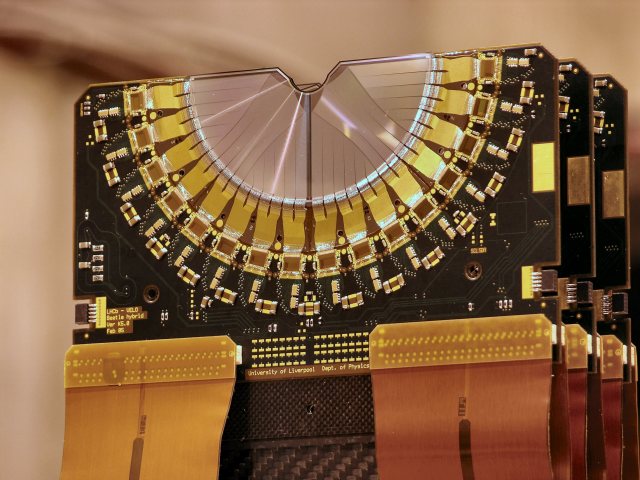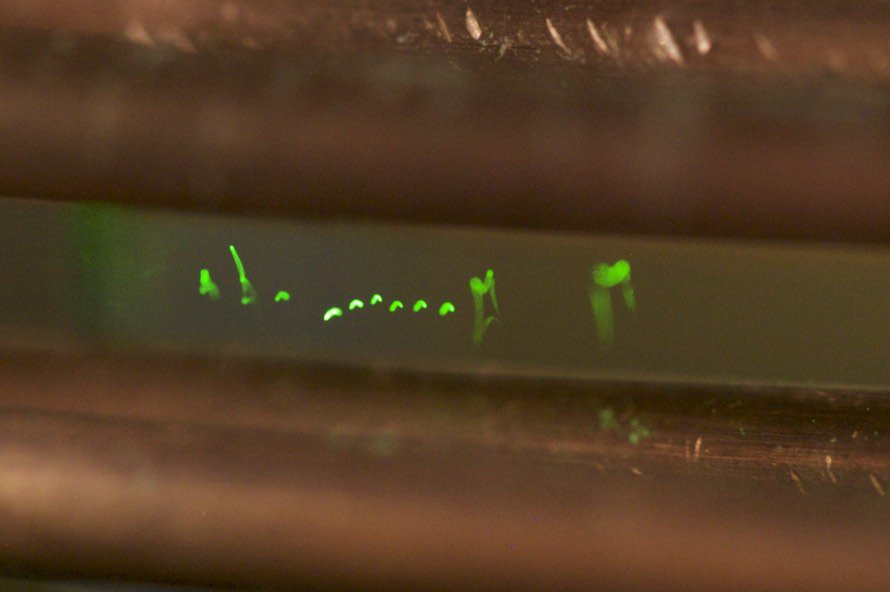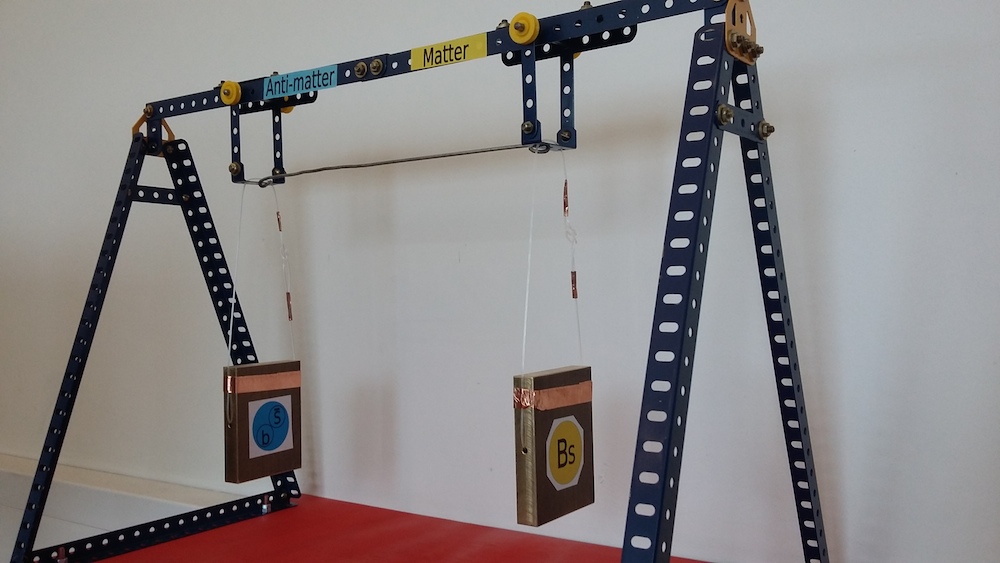Hands-on with the LHCb detector
The LHCb VELO detector uses silicon sensors, similar to those in your camera, to record the passing of the charged particles. The sensors contain a large number of strips which are individually read out by the detector to get a very precise measurement of the position of the charged particles.
The LHCb RICH detectors use a set of very sensitive photon detectors called Hybrid Photon Detectors (HPDs) to read out the light emitted by charged particles in the detector. At the centre of the detector there is a small silicon sensor, similar to those in your camera. These detectors are sensitive to individual photons of light. To put this in perspective, a 60W light-bulb emits about 100,000,000,000,000,000,000 photons every second.


A VELO sensor module (left) and a RICH HPD (right) will be available for visitors to look at at the exhibit.


